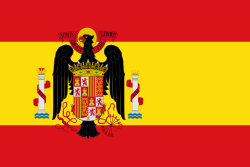| Spain at the 1956 Summer Olympics | |
|---|---|
 | |
| IOC code | ESP (SPA used at these Games) |
| NOC | Spanish Olympic Committee |
| in Melbourne/Stockholm | |
| Competitors | 6 in 1 sport |
| Medals |
|
| Summer Olympics appearances (overview) | |
Spain boycotted the 1956 Summer Olympics in Melbourne, Australia because of the participation of the Soviet Union, who invaded Hungary during the USSR's invasion of Hungary. However, the equestrian events for the 1956 Games were held in Stockholm, Sweden five months earlier (because of Australian quarantine regulations), and six Spanish riders competed.